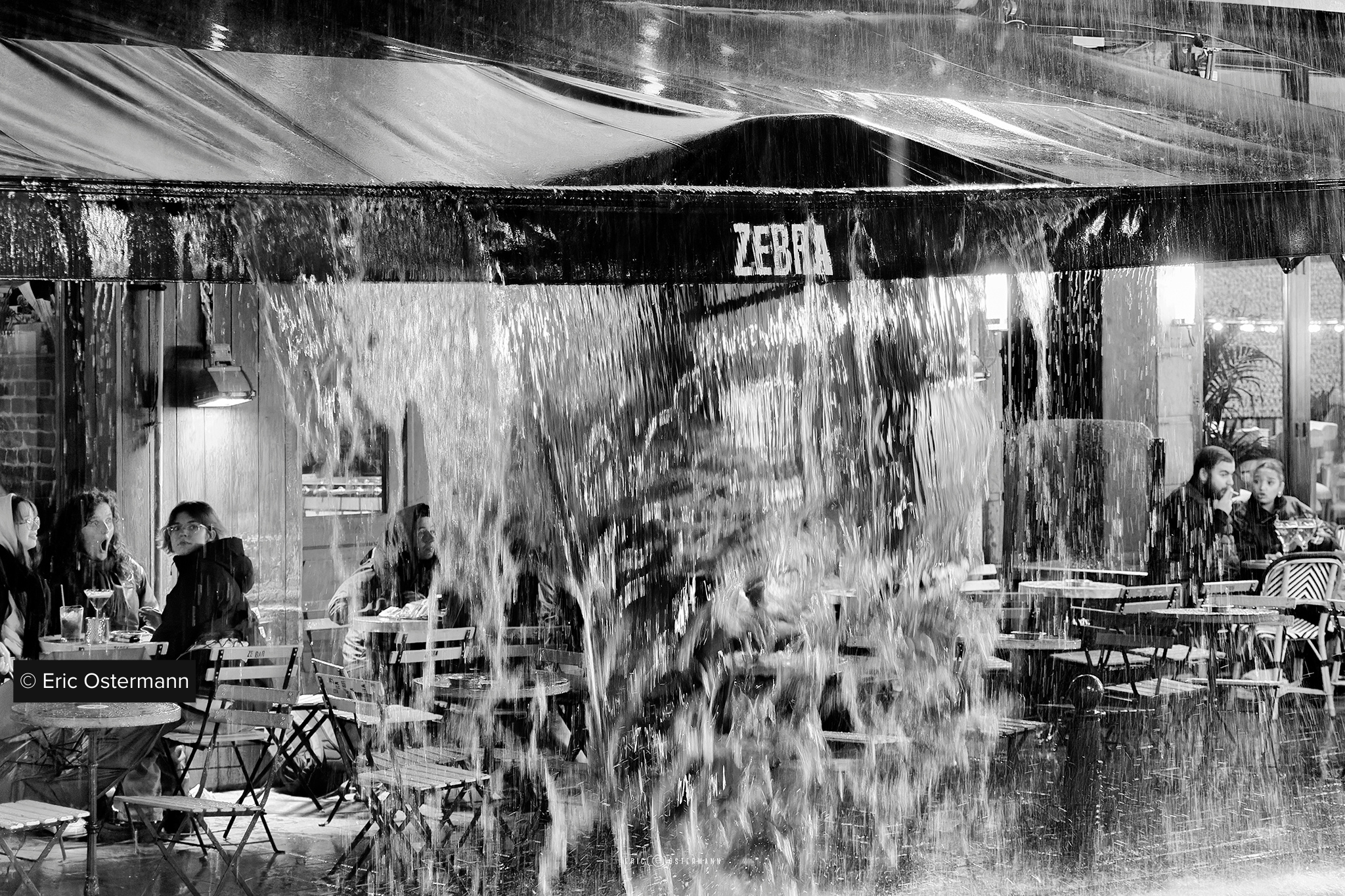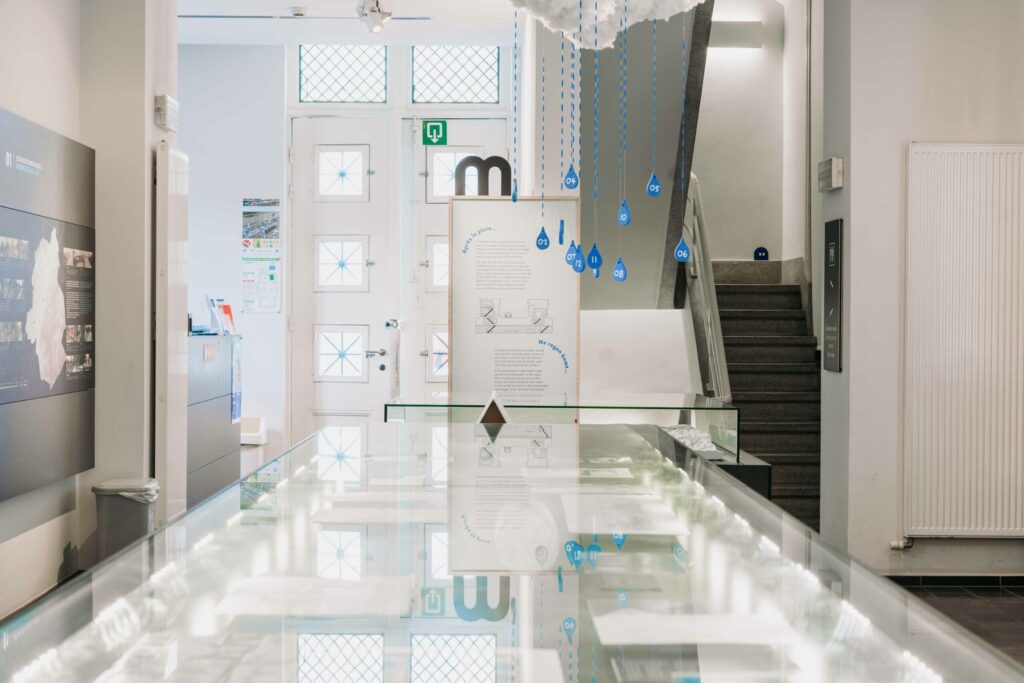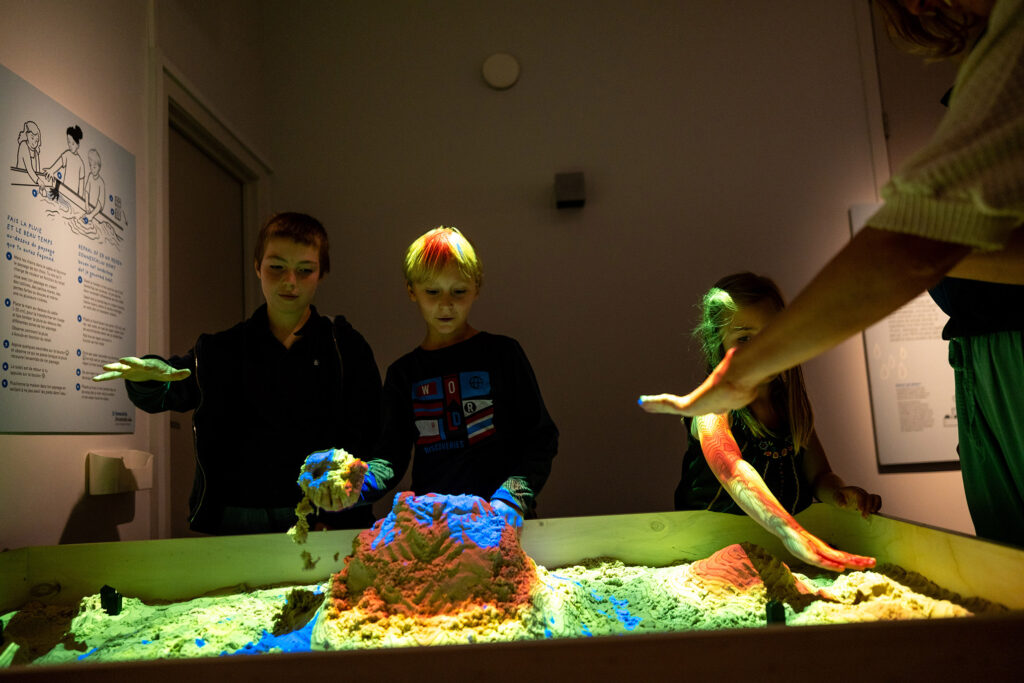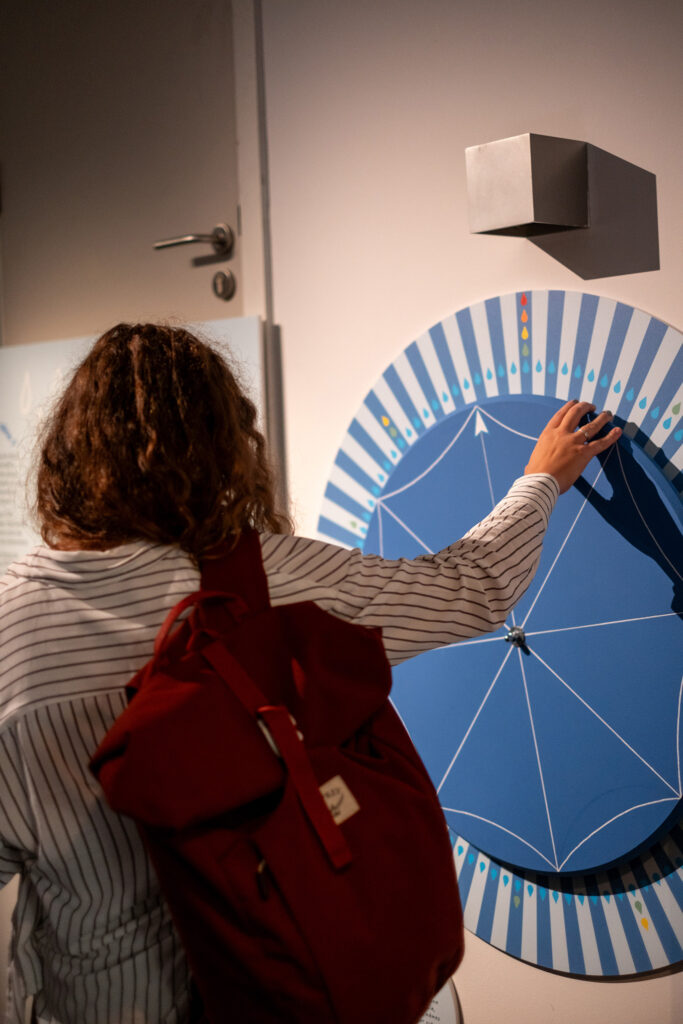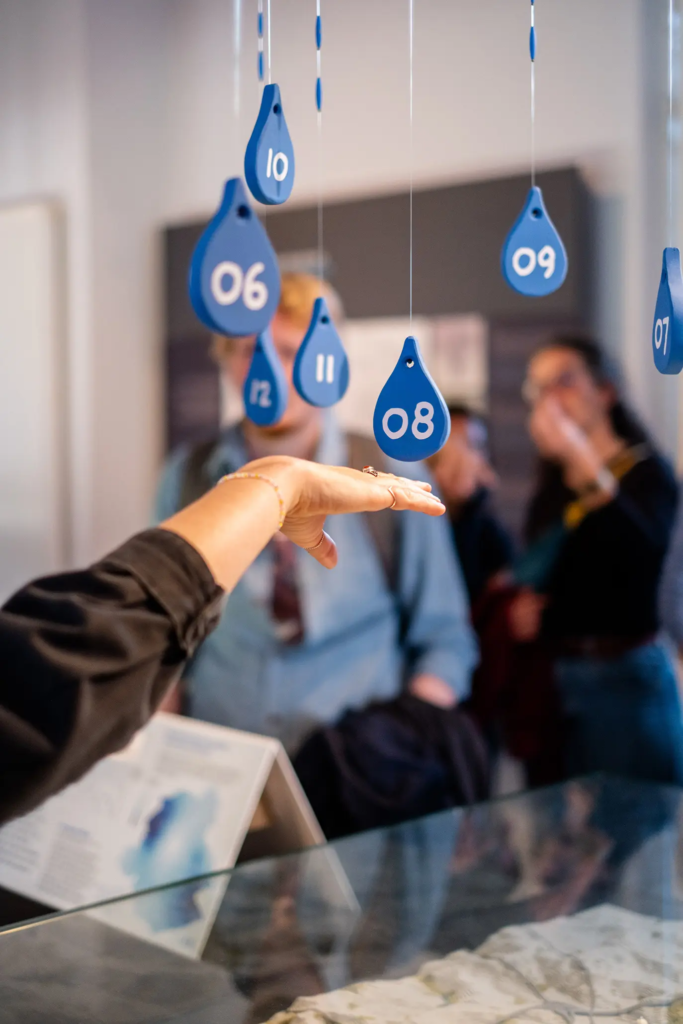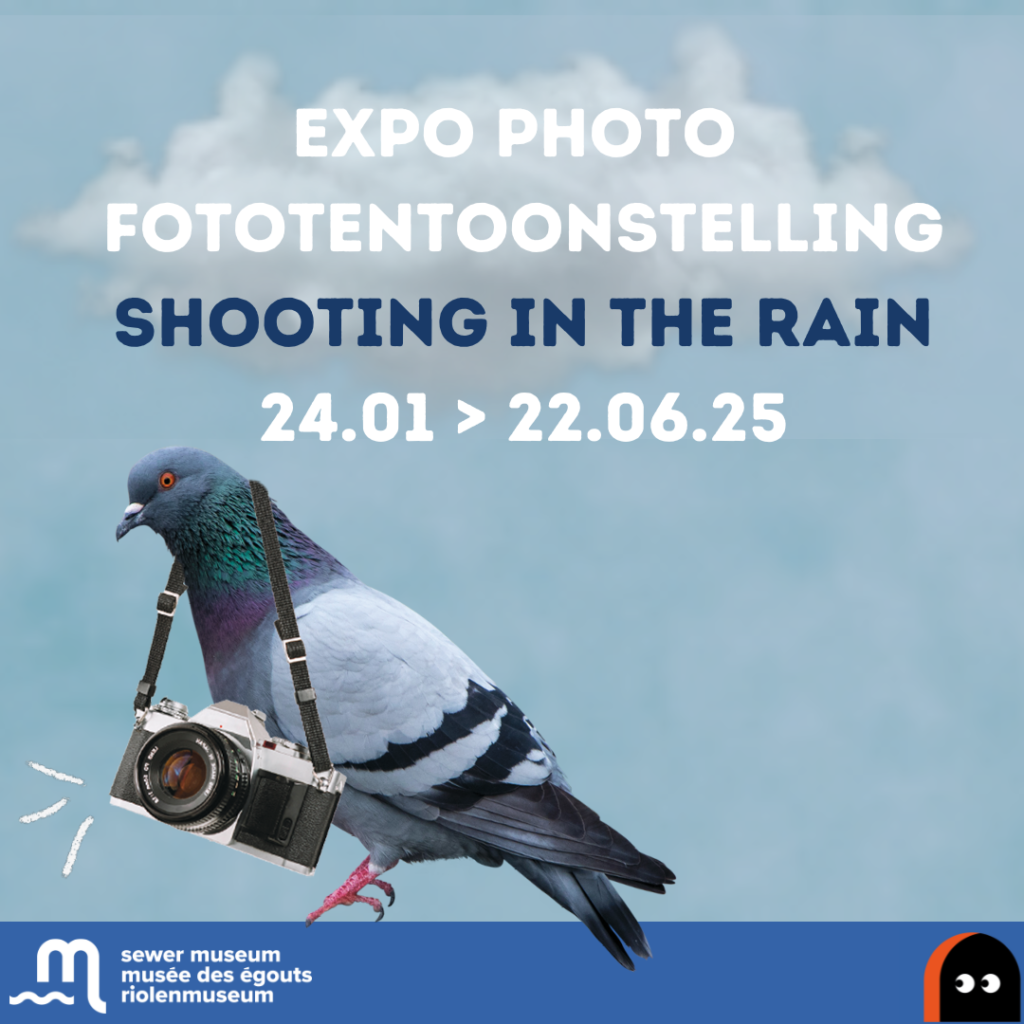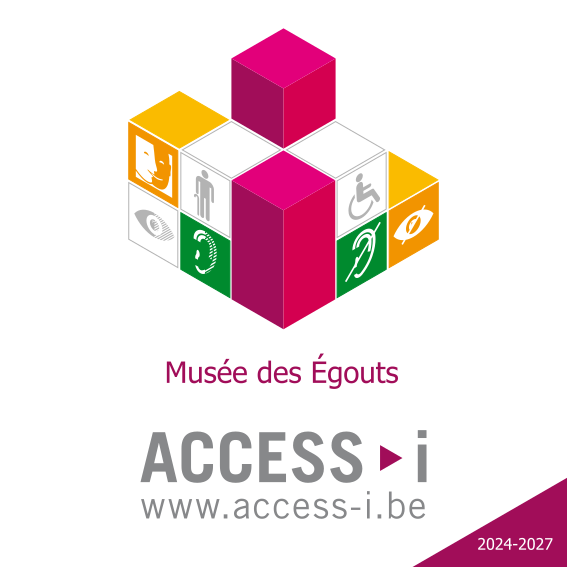In May 2024, it rained for a whopping 23 days. Few were happy about that new record last spring, but the Sewer Museum is happy to elaborate on this topical issue. With our new theme, we would like to make the general public aware of solutions to manage rainwater more sustainably. Indeed, in cities, water finds it increasingly difficult to penetrate the soil. Brussels is no exception, but a number of inspiring projects already exist in different neighbourhoods.
Rain is an everyday topic that often comes up. The natural phenomenon continues to occupy our minds, from simple things like our weekend plans to serious concerns like climate change, heatwaves and floods.
But have you ever thought about what exactly happens after a rainstorm? What does rain do to our sewer system in Brussels and what effect does it have on the environment?
Wouldn’t we be better off considering rain as a valuable resource rather than something to be disposed of as quickly as possible? All these questions and many more are addressed in the exhibition, through concrete examples and current, innovative solutions.

Our exhibition : After rain comes…
After rain comes… is integrated into the museum’s permanent exhibition. The existing signs and displays were updated, bringing the theme of rain to every room. As always, the museum team approaches this subject in a very accessible way. In addition, immersive interactions are at hand to make people think about the topic.
Photography lovers can also indulge this year with After rain comes… Thus, the museum has invited Eric Ostermann to exhibit some of his most iconic photographs of rainy Brussels. Indeed, this Brussels-based photographer loves to capture our capital during downpours.
The Sewer Museum also organises a photo competition to award original, poetic, mysterious or funny snapshots of rain. In January 2025, the finalists’ photographs will be exhibited in Brussels’ most underground gallery: the Chaussée de Mons’ wastewater collector.
The exhibition trail
Head in the clouds
This year, rain takes centre stage on each floor of the museum. We start with a sandbox, which, thanks to augmented reality, offers the opportunity to learn all about clouds, our inexhaustible rain factories.
A projector linked to a computer shows in colour exactly how water flows. All the senses are evoked in the process: visitors can build a city in the sand and then make it rain using their hands. By zooming out, they understand how all that water finds its way, and the impact of a lot, a little or prolonged precipitation on the city. Visitors will also gain a better understanding of the effects of global warming and soil hardening..
Rain in the city, an age-old challenge
In a dialogue between the permanent and themed exhibitions, we illustrate the challenges that engineers were already facing at the time of the covering of the River Senne. Man must constantly adapt to new constraints, which often result from his own actions.
Solutions inspired by nature.
Besides the systems devised by man, let’s look at nature’s solutions, which we are increasingly seeing reappearing in public spaces as a weapon against flooding and the suffocating heat island effect in cities.
Restoring the natural water cycle
The River Senne and wastewater from the collector on the Chaussée de Mons run under the pavilions of the Sewer Museum. Visitors regularly ask us if sewage ends up in the Senne. The answer is: “Not normally…” But during heavy rainfall, wastewater may still flow into the river or canal.
Call to action!
The exhibition is not just about measurements and facts. Visitors will also have some concrete examples of IRM (Integrated Rainwater Management) solutions implemented in Brussels.
Eric Ostermann
This self-taught photographer from Ixelles wishes to show Brussels from a different angle. In doing so, he often chooses places we pass by every day without paying much attention to them.
His favourite themes are street photography, reflections and pictures taken from rooftops. “It’s already great to watch the sun go down and the lights in the city light up from the rooftops of Brussels, but sharing it all through photography makes it even more fun,” says Eric. Using the reflections he sees in puddles, fountains and ponds, he often creates complex photographic compositions hidden from the inattentive eye.
Discover the world of Eric Ostermann
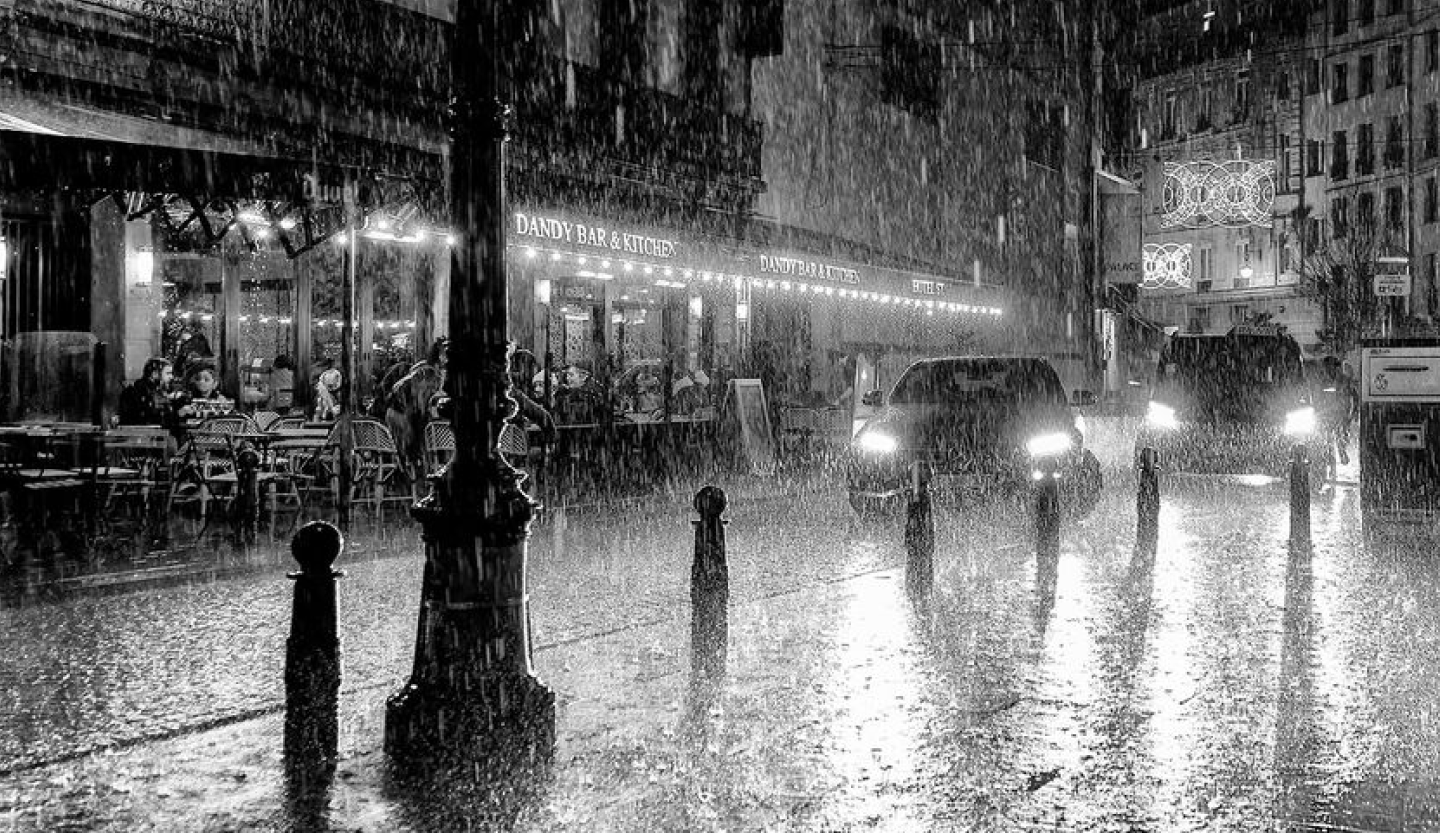
"The rain writes poems that I try to dissect with my camera."
Eric Ostermann
